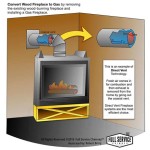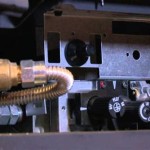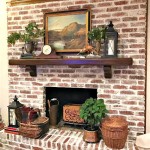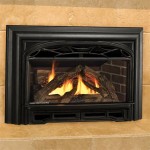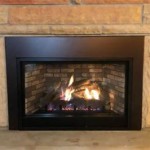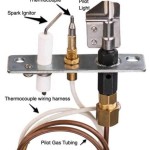Wood Burning Fireplace Heat Exchangers: Enhancing Efficiency and Heat Output
Wood-burning fireplaces, a staple in many homes, offer ambiance and a supplemental source of heat. However, traditional fireplaces are notoriously inefficient, with a significant portion of the generated heat escaping up the chimney. A wood-burning fireplace heat exchanger is a device designed to improve the efficiency of these fireplaces by capturing more of the heat produced from burning wood and circulating it into the room. This article explores the functionality, benefits, types, installation considerations, and maintenance requirements of wood-burning fireplace heat exchangers.
Understanding Fireplace Heat Loss
Before delving into the specifics of heat exchangers, it's crucial to understand why traditional fireplaces lose so much heat. The primary reason is that hot exhaust gases, containing a substantial amount of thermal energy, are drafted directly up the chimney. This process is essential for exhausting smoke and combustion byproducts, but it simultaneously pulls heated air from the room to fuel the draft, creating a negative pressure that draws in cold air from outside through gaps in windows and doors. This phenomenon results in a net loss of heat, as the fireplace essentially acts as a vent for heated air, even while burning wood.
Traditional fireplaces also suffer from inefficiency due to radiant heat loss through the firebox walls. While some heat radiates into the room, a portion is absorbed by the masonry and ultimately conducted to the outside, further reducing the overall heating effectiveness. The net result is that traditional fireplaces often have an efficiency rating of only 10-20%, meaning 80-90% of the heat generated is lost. Heat exchangers aim to mitigate this loss and improve the overall efficiency of the fireplace.
How Wood Burning Fireplace Heat Exchangers Work
Wood burning fireplace heat exchangers function by maximizing heat transfer from the fire to the surrounding air. They achieve this through various designs that increase the surface area exposed to the heat and facilitate air circulation. The basic principle involves placing a metallic device within the fireplace that becomes heated by the fire. This heated metal then transfers its thermal energy to the surrounding air, which is then circulated back into the room.
Different types of heat exchangers employ various methods to accomplish this heat transfer. Some designs feature a series of tubes through which air is forced, while others use finned metal surfaces to increase the surface area for heat exchange. Blower fans are often incorporated to enhance air circulation and improve the rate of heat transfer. By capturing heat that would otherwise be lost up the chimney, heat exchangers significantly increase the amount of usable heat produced by the fireplace.
The effectiveness of a heat exchanger is determined by several factors, including the design of the unit, the materials used in its construction, and the airflow rate. A well-designed heat exchanger will maximize the contact between the hot gases and the heat exchange surfaces, ensuring efficient heat transfer. Materials with high thermal conductivity, such as steel or copper, are commonly used to facilitate rapid heat transfer. A sufficient airflow rate is also crucial for carrying the heated air into the room.
Types of Wood Burning Fireplace Heat Exchangers
Several types of wood-burning fireplace heat exchangers are available, each with its own advantages and disadvantages. The choice of which type to use depends on factors such as fireplace size, desired heat output, and budget. The following are some of the most common types:
Fireplace Grate Heat Exchangers:
These units are designed to replace the existing grate in the fireplace. They typically consist of a hollow metal frame with tubes or fins that increase the surface area for heat transfer. Air is circulated through the tubes or fins, either passively through convection or actively using a blower fan. Fireplace grate heat exchangers are relatively easy to install and can significantly improve the fireplace's heating efficiency.
Fireplace Insert Heat Exchangers:
These are more comprehensive units that are installed directly into the fireplace opening. They typically consist of a firebox surrounded by a shell with air vents. A blower fan is used to circulate air between the firebox and the shell, transferring heat into the room. Fireplace inserts offer a higher level of efficiency than grate heat exchangers but require more extensive installation.
Tube-Type Heat Exchangers:
These feature a series of tubes that run through the fireplace, either horizontally or vertically. Hot gases from the fire pass around the tubes, heating them. Air is then circulated through the tubes, absorbing the heat and distributing it into the room. Tube-type heat exchangers are known for their efficiency and are often used in conjunction with blower fans.
Wrap-Around Heat Exchangers:
These are designed to wrap around the firebox, capturing heat from the sides and back of the fireplace. They typically consist of a metal jacket with fins or baffles that increase the surface area for heat transfer. Air is circulated around the jacket, absorbing the heat and distributing it into the room. Wrap-around heat exchangers are particularly effective at capturing radiant heat that would otherwise be lost.
Hydronic Heat Exchangers:
These utilize water or another fluid as a heat transfer medium. The heat exchanger is placed within the fireplace, and the fluid is circulated through a closed loop to a radiator or other heating device located elsewhere in the room or even throughout the house. Hydronic heat exchangers offer the advantage of being able to distribute heat to multiple locations and can be integrated with existing central heating systems.Benefits of Using a Fireplace Heat Exchanger
The primary benefit of using a wood-burning fireplace heat exchanger is increased heating efficiency. By capturing heat that would otherwise be lost up the chimney, heat exchangers can significantly improve the amount of usable heat produced by the fireplace. This can result in lower heating costs, as less supplemental heating is required.
Another benefit is improved comfort. Heat exchangers distribute heat more evenly throughout the room, eliminating cold spots and creating a more comfortable environment. This is particularly beneficial in larger rooms or homes with poor insulation. The forced air circulation provided by many heat exchangers also helps to prevent stratification, where warm air rises to the ceiling and cold air remains near the floor.
Enhanced safety is also a consideration. By improving combustion efficiency, heat exchangers can reduce the amount of creosote buildup in the chimney. Creosote is a flammable substance that can lead to chimney fires. By reducing creosote buildup, heat exchangers can help to prevent these fires and improve the overall safety of the fireplace.
Using a heat exchanger can contribute to energy conservation. By making the fireplace more efficient, less wood is required to produce the same amount of heat. This reduces the demand for firewood, which can help to conserve forest resources and reduce the environmental impact of wood burning.
Installation Considerations
The installation of a wood-burning fireplace heat exchanger varies depending on the type of unit. Fireplace grate heat exchangers are relatively easy to install, typically requiring only that the existing grate be replaced. Fireplace inserts and wrap-around heat exchangers require more extensive installation, which may involve modifying the fireplace opening or chimney.
Proper installation is critical for ensuring the safe and efficient operation of the heat exchanger. It is important to follow the manufacturer's instructions carefully and to consult with a qualified professional if necessary. Improper installation can lead to reduced efficiency, increased creosote buildup, or even safety hazards.
When selecting a heat exchanger, it is important to consider the size and type of fireplace. The heat exchanger should be appropriately sized for the fireplace opening and should be compatible with the type of fuel being burned. It is also important to consider the desired heat output and to choose a heat exchanger that can provide the necessary amount of heat.
Wiring considerations are also crucial, especially for units with blower fans. Electrical connections must be made according to local codes and safety standards. Overloading circuits can cause fire hazards and damage to the unit. It's recommended that a qualified electrician handles the wiring process.
Maintenance of Fireplace Heat Exchangers
Regular maintenance is essential for ensuring the long-term performance and safety of a wood-burning fireplace heat exchanger. Maintenance typically involves cleaning the heat exchanger surfaces to remove soot and ash buildup. This buildup can reduce the efficiency of the heat exchanger and increase the risk of chimney fires.
The frequency of cleaning depends on the amount of use and the type of fuel being burned. Generally, it is recommended to clean the heat exchanger at least once a year, or more frequently if necessary. Cleaning can be done using a brush and vacuum cleaner. For more stubborn buildup, a specialized fireplace cleaner may be required.
In addition to cleaning, it is also important to inspect the heat exchanger for any signs of damage, such as cracks or corrosion. Damaged heat exchangers should be repaired or replaced promptly to prevent safety hazards and maintain efficiency. Checking and cleaning the blower fan, if the unit has one, is also important. Dust and debris can accumulate on the fan blades, reducing its efficiency and potentially causing it to overheat.
Chimney inspections and cleaning are also an integral part of maintaining the overall system. A clean chimney ensures proper draft and reduces the risk of chimney fires. It's advisable to hire a certified chimney sweep to inspect and clean the chimney annually.
Following the manufacturer's recommended maintenance schedule and guidelines is paramount in prolonging the lifespan of the heat exchanger and ensuring its optimal performance. Neglecting maintenance can lead to reduced efficiency, increased safety risks, and ultimately, premature failure of the unit.

Size 45 Airculator Wood Burning Fireplace Heat Exchanger

An Ultimate Guide To Fireplace Heat Exchanger Meaning Installation

Fireplace As Heatingsystem Called Thermo Exclusive Property Blog

Size 39 Airculator Wood Burning Fireplace Heat Exchanger

28000 Btu Fireplace Furnaces Wood Burning Grate Heater Heat Exchanger W Blower Gas

Grate Heater Wikipedia

Fireplace Wood Burning Airculator 45 034 20k Btu 039 S Heat Exchanger Blower He14501

Fire Place Heat Exchanger Wood Fireplace Gas

Winter Heating Fireplace Heat Exchanger

Size 45 Airculator Wood Burning Fireplace Heat Exchanger
Related Posts

